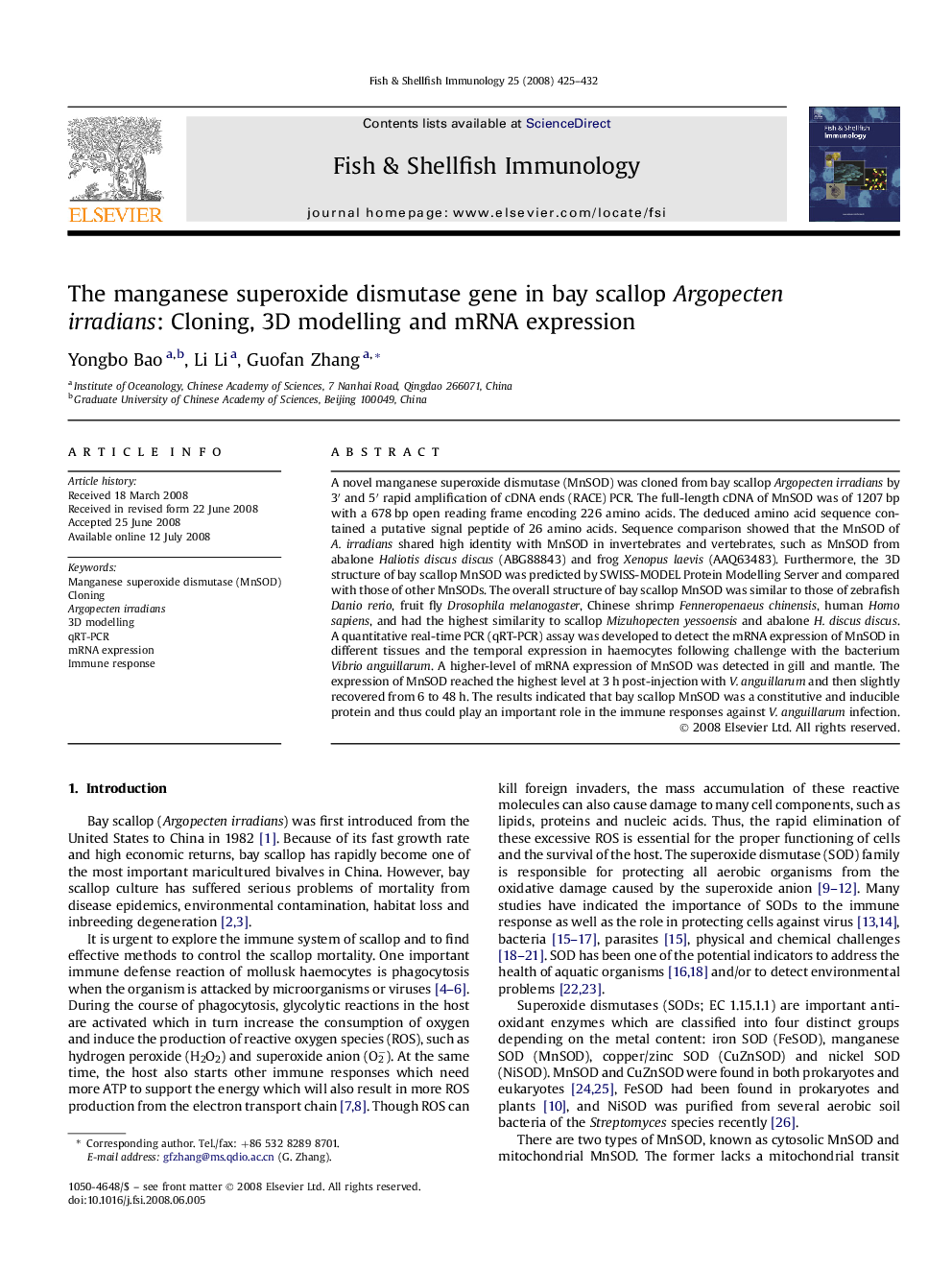| Article ID | Journal | Published Year | Pages | File Type |
|---|---|---|---|---|
| 2433335 | Fish & Shellfish Immunology | 2008 | 8 Pages |
A novel manganese superoxide dismutase (MnSOD) was cloned from bay scallop Argopecten irradians by 3′ and 5′ rapid amplification of cDNA ends (RACE) PCR. The full-length cDNA of MnSOD was of 1207 bp with a 678 bp open reading frame encoding 226 amino acids. The deduced amino acid sequence contained a putative signal peptide of 26 amino acids. Sequence comparison showed that the MnSOD of A. irradians shared high identity with MnSOD in invertebrates and vertebrates, such as MnSOD from abalone Haliotis discus discus (ABG88843) and frog Xenopus laevis (AAQ63483). Furthermore, the 3D structure of bay scallop MnSOD was predicted by SWISS-MODEL Protein Modelling Server and compared with those of other MnSODs. The overall structure of bay scallop MnSOD was similar to those of zebrafish Danio rerio, fruit fly Drosophila melanogaster, Chinese shrimp Fenneropenaeus chinensis, human Homo sapiens, and had the highest similarity to scallop Mizuhopecten yessoensis and abalone H. discus discus. A quantitative real-time PCR (qRT-PCR) assay was developed to detect the mRNA expression of MnSOD in different tissues and the temporal expression in haemocytes following challenge with the bacterium Vibrio anguillarum. A higher-level of mRNA expression of MnSOD was detected in gill and mantle. The expression of MnSOD reached the highest level at 3 h post-injection with V. anguillarum and then slightly recovered from 6 to 48 h. The results indicated that bay scallop MnSOD was a constitutive and inducible protein and thus could play an important role in the immune responses against V. anguillarum infection.
